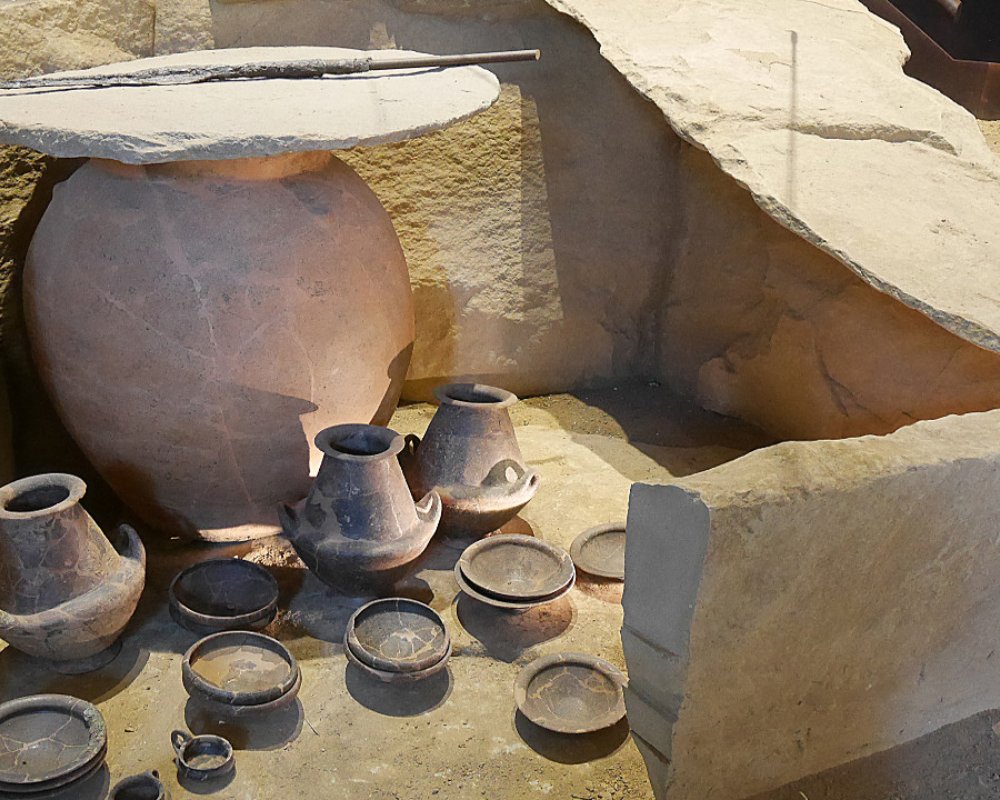From Marzabotto to Pistoia, exploring traces of the Etruscans along the Apennine mountain passes
Mountains have always represented union between people as opposed to separation. The relationship between the peoples of Central and Northern Italy, over the Apennines and Alps, were very intense beginning back in the Villanovan period. The Apennine passes, on the geographical border with Etruria, were travelled regularly in later historic periods to the point that one of the largest Etruscan cities ever to be discovered, Marzabotto, lies on the Pian di Misano plain, on the left bank of the Reno River.
On the other side of the Apennines stands another major city, currently being excavated, near Gonfienti. The Roman colony of Pistoia is situated on the site of an Etruscan settlement, albeit smaller in size. Via Marzabotto and its trading partners in the Arno Plain, Etruscan products, especially wine and bronze banqueting jars, reached Central and Eastern Europe.
Our tour begins in Marzabotto, in Emilia, one of the largest cities in Etruria. The highlands that dominate the current city are still home to an extensive archaeological area that shows what the typical urban structure of Etruscan cities was like: this is the ancient city of Misa.
It’s also interesting to visit the Pompeo Aria Museum, which displays numerous exhibits from the city of Misa, including grave goods with local materials and ceramics imported from Greece, metal and bronze objects, architectural elements, grave monuments and inscriptions.
Our tour begins in Marzabotto, in Emilia, one of the largest cities in Etruria. The highlands that dominate the current city are still home to an extensive archaeological area that shows what the typical urban structure of Etruscan cities was like: this is the ancient city of Misa.
It’s also interesting to visit the Pompeo Aria Museum, which displays numerous exhibits from the city of Misa, including grave goods with local materials and ceramics imported from Greece, metal and bronze objects, architectural elements, grave monuments and inscriptions.
Leaving Marzabotto behind, we carry on along the Porrettana, the ancient way connecting Florence and Bologna and where a vintage train rides are organized. Our destination is Porretta Terme, famous for the old (probably Roman) spa establishment. The bath house was frequented by Lorenzo the Magnificent, Giovanni Sforza Visconti, the Grand Duchess of Tuscany Bianca Cappello, the brother of Napoléon Luigi Bonaparte. Legend has it that the first to use it was a sick ox that was healed on drinking the waters of Rio Maggiore.
Leaving Marzabotto behind, we carry on along the Porrettana, the ancient way connecting Florence and Bologna and where a vintage train rides are organized. Our destination is Porretta Terme, famous for the old (probably Roman) spa establishment. The bath house was frequented by Lorenzo the Magnificent, Giovanni Sforza Visconti, the Grand Duchess of Tuscany Bianca Cappello, the brother of Napoléon Luigi Bonaparte. Legend has it that the first to use it was a sick ox that was healed on drinking the waters of Rio Maggiore.
We carry on along the Porrettana as far as Sambuca Pistoiese to reach Pistoia. The Sambuca Pistoiese area, in the Tosco-Emilian Apennines between the upper Reno Valley and the Limentra Valley, was an important feudal centre that became the headquarters of the municipality, whose statute dates to 1291 and is one of the oldest in Italy. The castle belonged to the Vergiolesi family, whose descendant, Selvaggia, was mentioned in a song by Cino da Pistoia. The route along the paved section of the via Francesca is especially interesting (a part of the via Francigena between Sambuca and Pavana).
A few kilometres further on and we reach Pistoia. A visit to this lovely city is always full of happy surprises, a way of rediscovering genuine artistic and historic gems, including the Pistoia Underground Museum.
We carry on along the Porrettana as far as Sambuca Pistoiese to reach Pistoia. The Sambuca Pistoiese area, in the Tosco-Emilian Apennines between the upper Reno Valley and the Limentra Valley, was an important feudal centre that became the headquarters of the municipality, whose statute dates to 1291 and is one of the oldest in Italy. The castle belonged to the Vergiolesi family, whose descendant, Selvaggia, was mentioned in a song by Cino da Pistoia. The route along the paved section of the via Francesca is especially interesting (a part of the via Francigena between Sambuca and Pavana).
A few kilometres further on and we reach Pistoia. A visit to this lovely city is always full of happy surprises, a way of rediscovering genuine artistic and historic gems, including the Pistoia Underground Museum.


